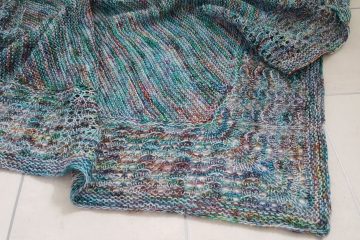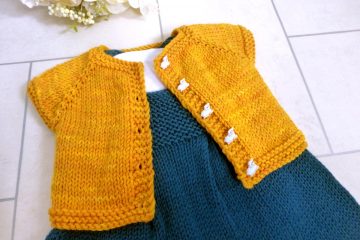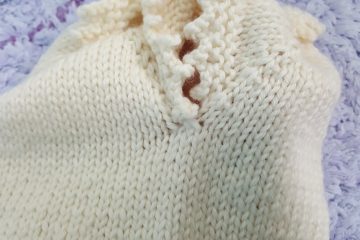A few weeks ago I went to a local farm and helped with sheep shearing day.
As I had never handled a sheep before, aside from feeding the little cuties from my hand, this day was a huge learning curve for me!
The day came about from a casual conversation with a farmer. The topic of what you do in your spare time came up, to which I naturally replied I usually spend it knitting or working on my business where I dye pretty gradient yarn and design hand knitting patterns. This led to “oh, we are shearing our sheep soon. Would you like to come and watch and possibly have a few fleeces?” to which my reply was probably a little over enthusiastic! Anyways, not wanting to come along to just watch and take home a few fleeces, I went prepared and with the hope I would be allowed to help too!
I arrived on the day as the shearer was unloading and prepping, and the last few hurdles to guide the sheep were being tied in place. Luckily I was allowed to help. Eek! Although this was amidst looks of bewilderment wondering why on earth this girl who had never handled a sheep in her life, was willing to do manual labour amongst the sheep muck and get stuck in to do whatever little job needed to be done in exchange for a couple of worthless fleeces. Honestly, you can not get the same experience watching this happen from a YouTube video!
When everything was set the discussion started on who would do what. The role of skirting the fleeces was mentioned and I chimed up. Remember my post 8 Essentials to Make your First Sheep Shearing Awesome? Tips 7 and 8 came from this moment. Despite being told it was a shitty job, quite literally you are pulling the lumps of poo off the fleece with your hands, I wasn’t going to back down. I got the job!
As each sheep had its fleece removed and it then bolted off to freedom, I gathered up the fleece and removed it from the shearing space. Spreading the fleece out on a large board, I then skirted it. As above, this is basically pulling off the lumps of poo with your hands and tossing them to one side. The rear and legs were the most common areas to remove, but in general this was quite a clean flock. As a tip, if you can’t tell the front from the back of a fleece, if they have been tagged then the tag is closer to the rear end. Once skirted, the fleeces were rolled up and put into the British Wool Marketing Board bags.
Going back to being a spinner now, if you don’t know the breed, there are still certain things to look out for if you are being offered a fleece. If you are being offered the whole fleece, it is best to spread the entire fleece out on a large sheet of plastic. I kept the centre of an old trampoline for this purpose, whilst the broken metal frame went for recycling.

1. Second Cuts
This shouldn’t happen with an experienced shearer, but sometimes the clippers don’t go quite close enough to the skin, so a second cut is done. This leaves lots of short fibre in the fleece you won’t be able to use. Check the inside of the fleece for second cuts and try to avoid these fleeces.
2. Matted Fleeces
A good fleece is open and can fall apart in your hands (unless this is due to second cuts as above). A matted fleece is harder for you, the hand spinner, to process. You must pull it all apart before you can then process it, and the fibre can become damaged just doing this. If the fleece looks like a particularly dirty sheep skin rug then try to avoid it.
3. Ground in Vegetation
Some sheep look like they have been dragged through a hedge backwards. They are covered in twigs, grass and seed, amongst other stuff! Try to avoid these as it makes processing more difficult for you. Mud and poo can be removed with a good soak though. It is not necessary to get all the mud and poo off at this point, just the clumps can go.
4. Tags
Sheep are tagged for various reasons. These tags, spray paint on the back to you and me, may not fully wash out during a commercial cleaning, so will be even tougher for you and me. If the only good part of the fleece you can see is covered in this, then move on to the next fleece.
I had an awesome time helping with the sheep shearing. I wasn’t on skirting duty the entire time. There was some sheep herding and counting involved, and I even sheared my first sheep! I certainly won’t forget the day, ever. I was gifted three fleeces of varying quality to take home, two Jacobs and one Texel. I will continue to share my learning experience with you as I move on to cleaning them next. If you have any tips to share I would love to hear from you via the comments to help me and others learn.
P.S. If you’re given a fleece before it has been skirted you should skirt it before you store it. It can be stored unwashed, but please do not store fleece unskirted. This can attract unwanted pests, spread disease and germs, and damage the fleece. These parts should be disposed of in non-compostible rubbish, or mixed deep into an active composting pile!



0 Comments